Inspections Track Software For Oil and Gas Inspection Industry
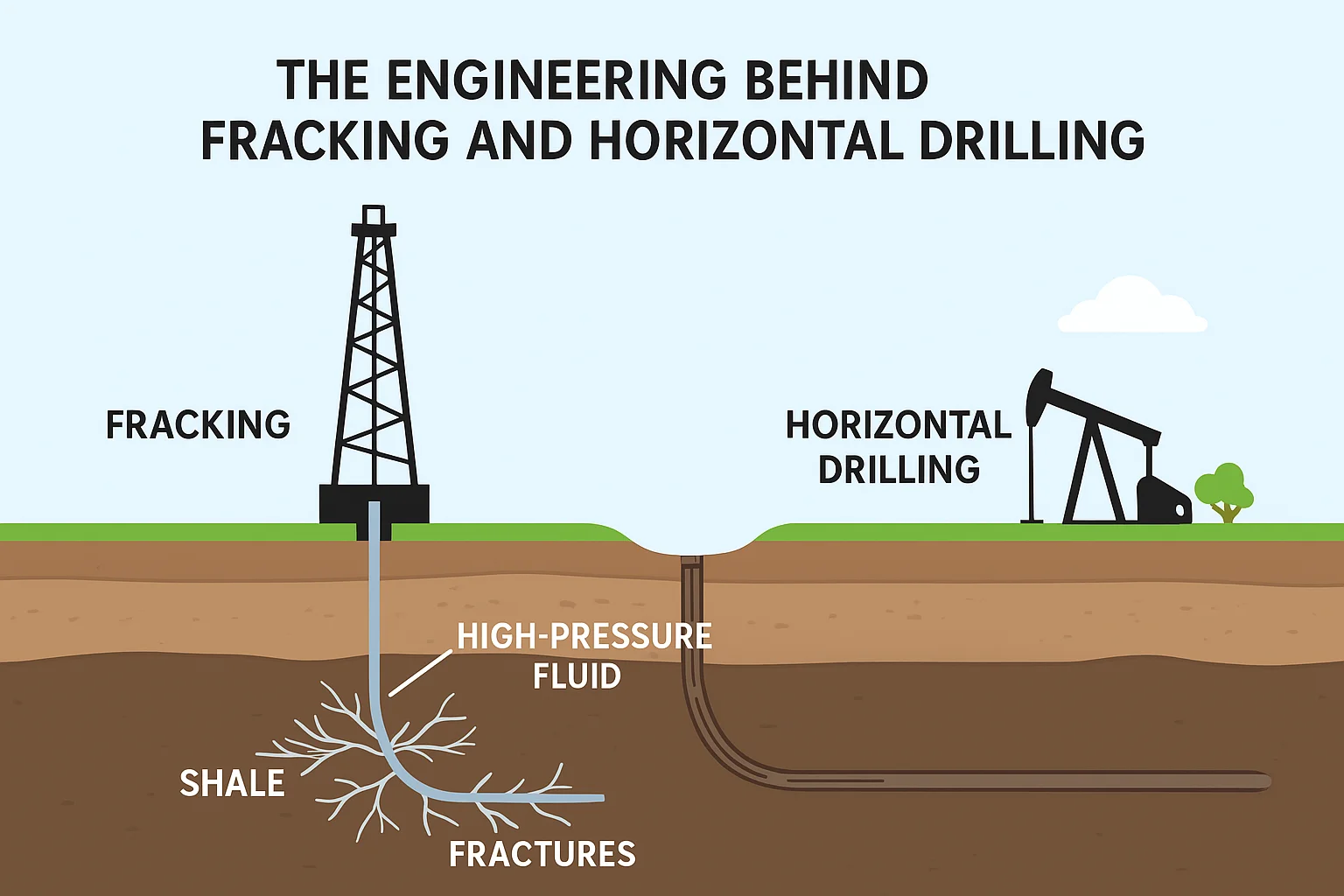
The oil and gas industry has evolved dramatically over the past few decades. Among the most revolutionary advancements are fracking (hydraulic fracturing) and horizontal drilling — two engineering marvels that have transformed how we access underground energy reserves. These methods have unlocked new sources of natural gas and oil, reshaping global energy production and supply.
But what exactly goes into the engineering behind these technologies? Let’s dive into the science, technology, and process that make fracking and horizontal drilling so effective.
Before diving into the engineering, it’s essential to understand what fracking and horizontal drilling are — and how they work together.
| Technique | Purpose | Process Summary |
|---|---|---|
| Fracking (Hydraulic Fracturing) | To extract oil and gas trapped in shale rock | High-pressure fluid is injected into rock formations, creating fractures that release hydrocarbons. |
| Horizontal Drilling | To reach more oil and gas reserves from one vertical well | The drill bit turns horizontally underground, increasing the exposed surface area within the reservoir. |
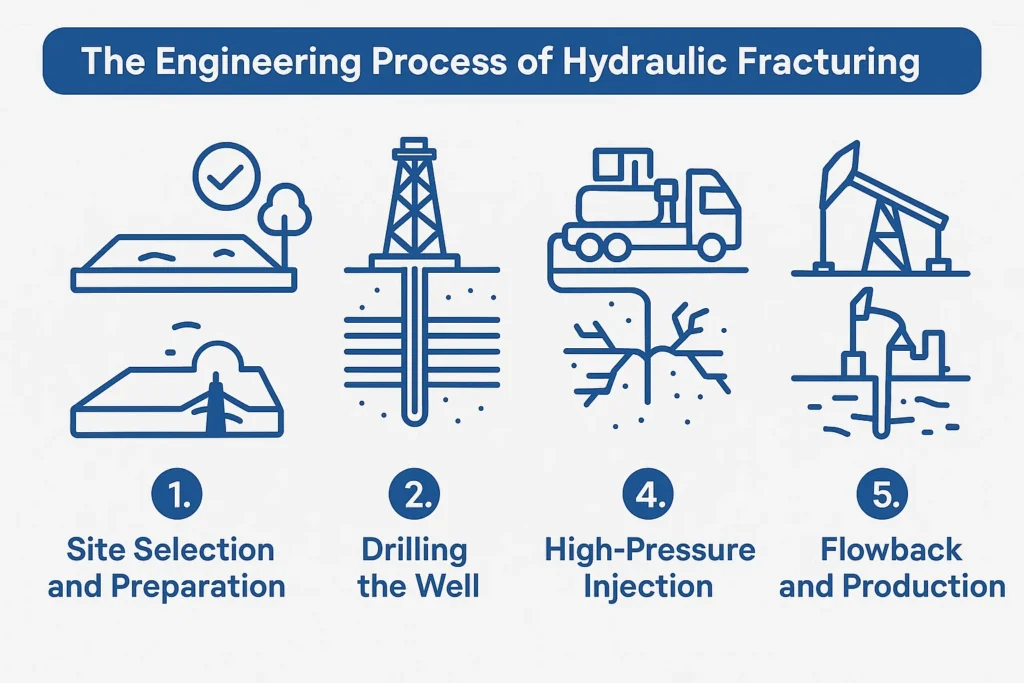
Engineering begins with detailed geological surveys and seismic studies. These help identify shale formations rich in hydrocarbons. Engineers analyze:
Once approved, well pads are constructed, and drilling rigs are brought in.
The process starts vertically, drilling thousands of feet below the surface until the desired shale layer is reached.
Engineers use drilling muds — specially formulated fluids — to cool the drill bit, stabilize the wellbore, and remove rock cuttings.
To ensure safety and prevent contamination of groundwater, engineers line the well with steel casing and cement it in place.
This step is crucial for maintaining well integrity and environmental compliance.
After the well is cemented, a fracking fluid mixture (typically 90% water, 9.5% sand, and 0.5% chemical additives) is injected at high pressure into the rock formation.
The pressure causes tiny fractures to form in the rock, allowing trapped oil or gas to flow more freely.
Once the fractures are created, pressure is released. Some of the fluid returns to the surface — called flowback — and the well begins production as hydrocarbons flow up the wellbore.
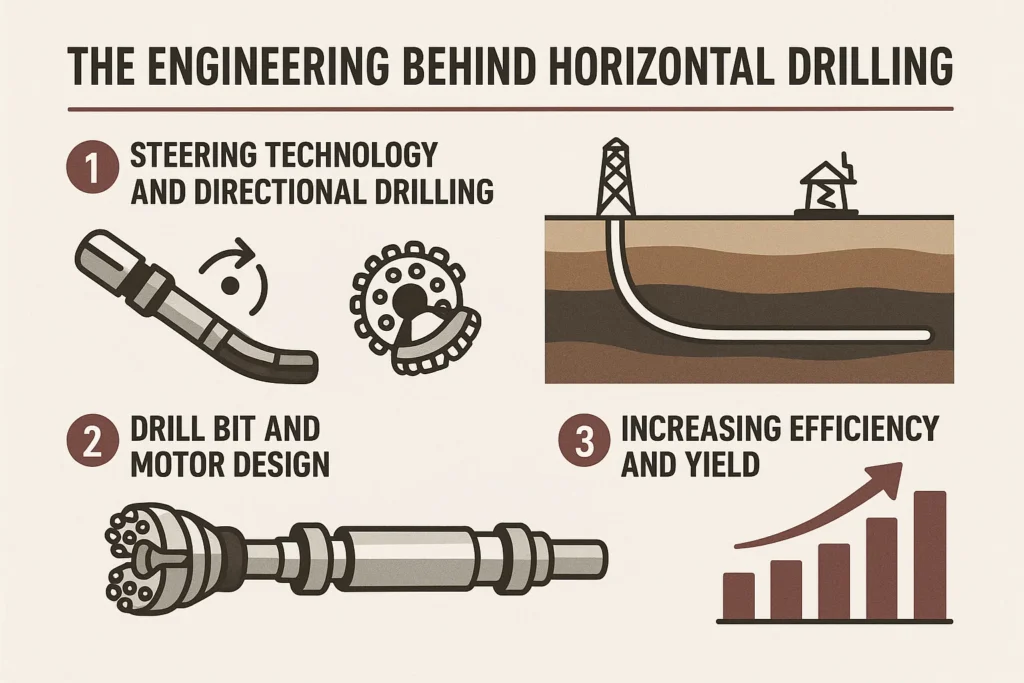
Horizontal drilling requires precision steering using advanced Measurement While Drilling (MWD) and Logging While Drilling (LWD) technologies.
Engineers monitor real-time data to control:
This ensures the drill stays within the productive rock layer, often for several kilometers.
The success of horizontal drilling depends heavily on drill bit technology.
Modern systems use downhole mud motors and rotary steerable systems that can change direction while drilling.
By drilling horizontally, companies can access a much larger section of the reservoir from a single surface location.
This reduces:
It’s a win-win for efficiency and sustainability.
In today’s digital era, fracking and drilling engineers rely heavily on real-time data and analytics.
Technologies like AI, machine learning, and IoT sensors help monitor well integrity, pressure, and environmental conditions continuously.
This not only improves operational safety but also enhances predictive maintenance, reducing downtime and costs.
While fracking and horizontal drilling have revolutionized the energy sector, they also come with environmental responsibilities.
Engineers and operators must manage:
Adhering to strict inspection protocols and regulatory compliance is vital to maintain safety and sustainability standards.
Despite its success, fracking engineering is not without challenges.
Some of the key issues include:
As the global energy landscape shifts toward sustainability, engineers are constantly innovating.
Emerging technologies such as automated inspection systems, remote monitoring, and carbon capture integration are shaping the next phase of responsible drilling.
Future developments will focus on:
In such high-risk and data-intensive environments, precision and compliance are critical.
That’s where Inspections Track Software comes in — a cutting-edge solution designed specifically for the oil and gas inspection industry.
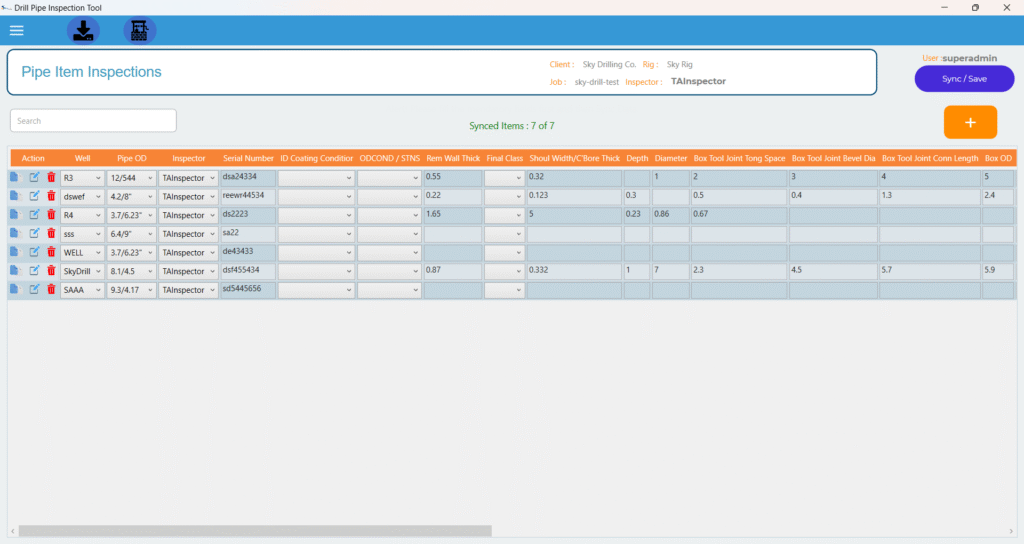
By digitizing and automating the inspection process, Inspections Track Software helps engineers maintain safety, accuracy, and compliance — from drilling operations to well maintenance.
The engineering behind fracking and horizontal drilling is a blend of innovation, precision, and data-driven control. These technologies have enabled access to resources once considered unreachable — fueling industries, economies, and technological progress.
As the sector continues to evolve, tools like Inspections Track Software ensure that every phase — from drilling to inspection — is managed efficiently, safely, and sustainably.
In an industry where precision meets power, engineering excellence and intelligent software go hand in hand.
Read more : oil companies and the low carbon transition
Fracking, or hydraulic fracturing, is used to extract oil and natural gas trapped in deep shale rock formations by injecting high-pressure fluid to create fractures that release hydrocarbons.
Unlike traditional vertical drilling, horizontal drilling allows the well to turn and extend laterally through the reservoir, increasing access to oil and gas deposits from a single surface point.
The main challenges include groundwater protection, wastewater management, and minimizing seismic activity — all of which require strict monitoring and compliance measures.
Inspections Track Software streamlines inspection management, automates reporting, and ensures compliance across drilling operations, helping oil and gas companies maintain safety and efficiency.

Introduction: Why the Inspection Mindset Matters In modern oil and gas operations, safety cannot rely solely on checklists. While checklists ensure compliance, they rarely capture the deeper insights needed to prevent failures. Therefore, the real…
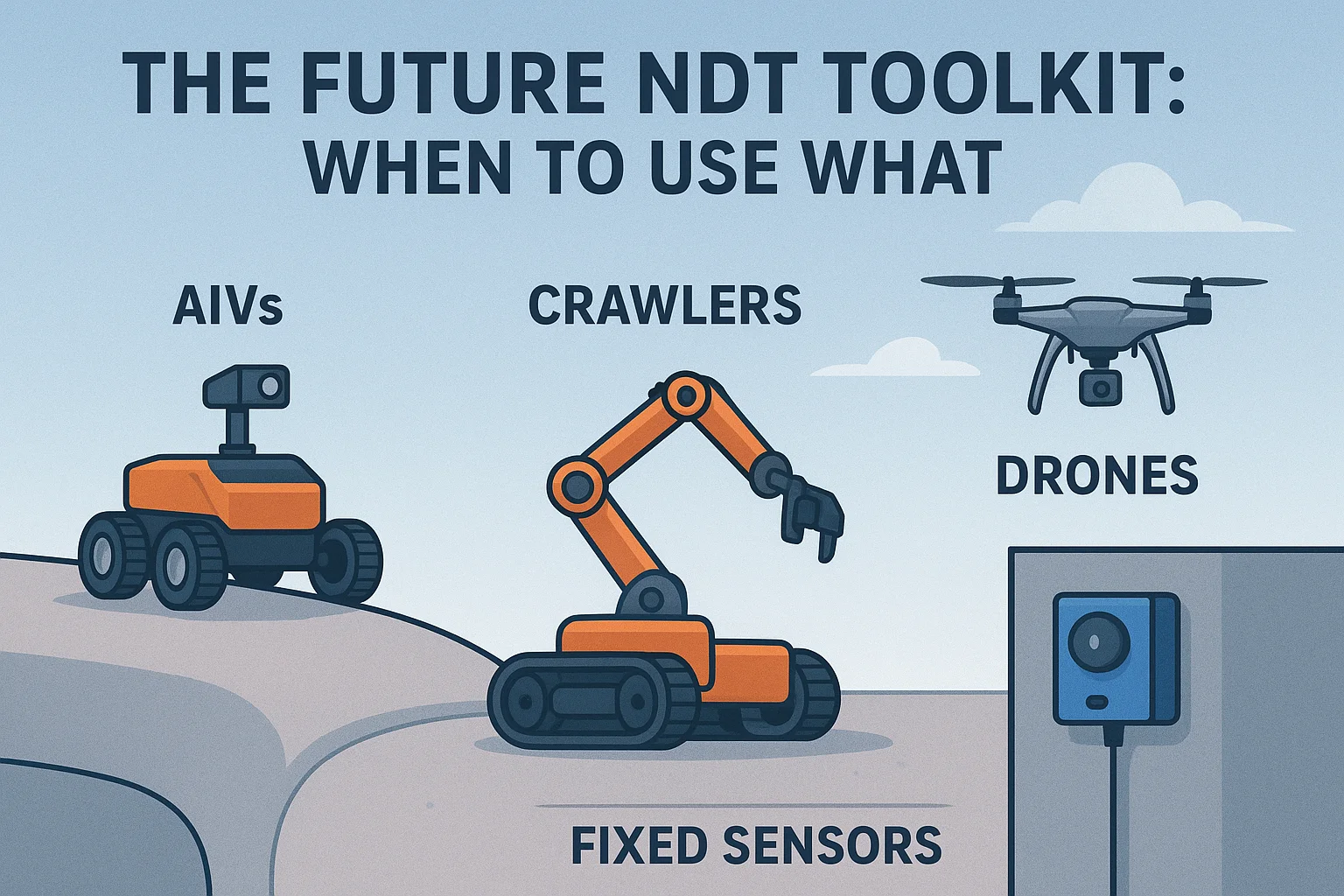
Introduction: The Evolving Landscape of NDT Non-Destructive Testing (NDT) has entered a new era one defined by automation, robotics, and real-time data intelligence. Traditional manual surveys still matter, yet modern inspection teams now rely on…
SkySoft Connections provides quality IT services around the globe. Our services begin with experience and end with dedication, ensuring innovation and reliability
© Copyrights, 2024 All Rights Reserved Skysoftconnections
Contact us
Get notified about new articles
Comment (1)
Enhanced Oil Recovery Mechanisms - inspectiontrack
Oct 22, 2025[…] Read more : engineering behind fracking and horizontal drilling […]
Comments are closed.